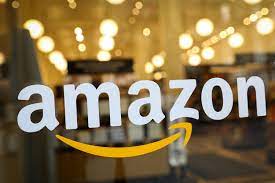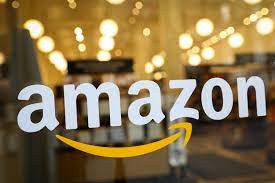
Amazon.com Inc reported a poor quarter and outlook on Thursday, blaming increasing expenses to manage warehouses and deliver items to customers.
After-hours trading saw a 9 per cent drop in shares.
Amazon is facing a slew of issues following a long-running rise in sales during the COVID-19 outbreak. The company's expenses increased as it increased salaries to recruit staff. A fulfilment centre in New York City decided to form Amazon's first union in the United States, a decision that the retailer is fighting. Furthermore, rising fuel prices risk reducing consumers' discretionary cash while increasing delivery costs for Amazon, the world's largest online retailer.
According to Amazon's projection, raising the price of its fast-shipping membership Prime last quarter may not have been enough to boost its profit. This quarter, the corporation expects to lose up to $1 billion in operational income or make up to $3 billion. This is down from a $7.7 billion operational profit in the same time last year.
"This was a tough quarter for Amazon with trends across every key area of the business heading in the wrong direction and a weak outlook for Q2," said Insider Intelligence principal analyst Andrew Lipsman.
However, there were some bright spots, such as Amazon Web Services, the sector that new CEO Andy Jassy oversaw before taking the helm of the company last year. The unit grew revenue by 37 per cent to $18.4 billion, slightly exceeding analysts' expectations.
According to Jassy, the company has now satisfied its warehouse personnel and capacity requirements, but it still has work to do to improve productivity.
"This may take some time, particularly as we work through ongoing inflationary and supply chain pressures, he said in a press release. "We see encouraging progress on a number of customer experience dimensions, including delivery speed performance as we’re now approaching levels not seen since the months immediately preceding the pandemic in early 2020."
Amazon's performance called into doubt consumer demand. While online store revenues fell and the quantity of products sold remained steady in the first quarter, the retailer's Chief Financial Officer Brian Olsavsky expressed satisfaction with the pace of shopper transactions. So far, he said, inflation has not dampened regular ordering patterns.
According to Refinitiv IBES data, net sales were $116.4 billion in the first quarter, in line with analysts' estimates.
Amazon reported a $3.8 billion loss, or $7.56 per share, compared to a $8.1 billion profit, or $15.79 per share, a year earlier. This was due in part to a $7.6 billion drop in the value of its interest in Rivian, an electric vehicle manufacturer.
Sales increased by 8 per cent in North America, the company's largest market, but operating expenses increased by 16 per cent to $71 billion.
Olsavsky told reporters that the company's costs were up around $6 billion from the previous year, including $2 billion in inflationary pressures. These ranged from increased wages (albeit the corporation has reduced its signing bonuses somewhat) to fuel costing 1.5 times what it did a year earlier. According to Olsavsky, the Russian invasion of Ukraine has contributed to increasing pricing.
Amazon wants to save costs by optimising transfers between warehouses. Them also has a remarkable amount of surplus warehousing and transportation capacity, which cost it nearly $2 billion in the first quarter.
According to Scott Mushkin, founder of research firm R5 Capital, this means Amazon needs to complete more orders to justify the space. The storage space will most certainly come in handy during Prime Day, Amazon's annual sales event. The event will take place in July, according to the company's announcement on Thursday.
"They now have an enormous amount of distribution and logistics infrastructure. To leverage it, they need the volume," Mushkin said.
The results of the e-commerce behemoth in brick-and-mortar retail have been varied. Amazon announced in March that it would close all 68 of its bookshops, pop-ups, and other home products outlets, while focusing more on food. For example, it has automated two Whole Foods shops to eliminate the need for cashiers. The company's physical shop sales increased by 17 per cent to $4.6 billion.
Amazon's outlook reflects industry-wide issues. Just last week, one of Amazon's partners, United Parcel Service Inc, predicted a slowing in e-commerce delivery growth.
For the second quarter, Amazon expects net revenues to range between $116 billion and $121 billion. According to Refinitiv IBES statistics, analysts expected $125.5 billion.
(Source:www.businesstoday.in)
After-hours trading saw a 9 per cent drop in shares.
Amazon is facing a slew of issues following a long-running rise in sales during the COVID-19 outbreak. The company's expenses increased as it increased salaries to recruit staff. A fulfilment centre in New York City decided to form Amazon's first union in the United States, a decision that the retailer is fighting. Furthermore, rising fuel prices risk reducing consumers' discretionary cash while increasing delivery costs for Amazon, the world's largest online retailer.
According to Amazon's projection, raising the price of its fast-shipping membership Prime last quarter may not have been enough to boost its profit. This quarter, the corporation expects to lose up to $1 billion in operational income or make up to $3 billion. This is down from a $7.7 billion operational profit in the same time last year.
"This was a tough quarter for Amazon with trends across every key area of the business heading in the wrong direction and a weak outlook for Q2," said Insider Intelligence principal analyst Andrew Lipsman.
However, there were some bright spots, such as Amazon Web Services, the sector that new CEO Andy Jassy oversaw before taking the helm of the company last year. The unit grew revenue by 37 per cent to $18.4 billion, slightly exceeding analysts' expectations.
According to Jassy, the company has now satisfied its warehouse personnel and capacity requirements, but it still has work to do to improve productivity.
"This may take some time, particularly as we work through ongoing inflationary and supply chain pressures, he said in a press release. "We see encouraging progress on a number of customer experience dimensions, including delivery speed performance as we’re now approaching levels not seen since the months immediately preceding the pandemic in early 2020."
Amazon's performance called into doubt consumer demand. While online store revenues fell and the quantity of products sold remained steady in the first quarter, the retailer's Chief Financial Officer Brian Olsavsky expressed satisfaction with the pace of shopper transactions. So far, he said, inflation has not dampened regular ordering patterns.
According to Refinitiv IBES data, net sales were $116.4 billion in the first quarter, in line with analysts' estimates.
Amazon reported a $3.8 billion loss, or $7.56 per share, compared to a $8.1 billion profit, or $15.79 per share, a year earlier. This was due in part to a $7.6 billion drop in the value of its interest in Rivian, an electric vehicle manufacturer.
Sales increased by 8 per cent in North America, the company's largest market, but operating expenses increased by 16 per cent to $71 billion.
Olsavsky told reporters that the company's costs were up around $6 billion from the previous year, including $2 billion in inflationary pressures. These ranged from increased wages (albeit the corporation has reduced its signing bonuses somewhat) to fuel costing 1.5 times what it did a year earlier. According to Olsavsky, the Russian invasion of Ukraine has contributed to increasing pricing.
Amazon wants to save costs by optimising transfers between warehouses. Them also has a remarkable amount of surplus warehousing and transportation capacity, which cost it nearly $2 billion in the first quarter.
According to Scott Mushkin, founder of research firm R5 Capital, this means Amazon needs to complete more orders to justify the space. The storage space will most certainly come in handy during Prime Day, Amazon's annual sales event. The event will take place in July, according to the company's announcement on Thursday.
"They now have an enormous amount of distribution and logistics infrastructure. To leverage it, they need the volume," Mushkin said.
The results of the e-commerce behemoth in brick-and-mortar retail have been varied. Amazon announced in March that it would close all 68 of its bookshops, pop-ups, and other home products outlets, while focusing more on food. For example, it has automated two Whole Foods shops to eliminate the need for cashiers. The company's physical shop sales increased by 17 per cent to $4.6 billion.
Amazon's outlook reflects industry-wide issues. Just last week, one of Amazon's partners, United Parcel Service Inc, predicted a slowing in e-commerce delivery growth.
For the second quarter, Amazon expects net revenues to range between $116 billion and $121 billion. According to Refinitiv IBES statistics, analysts expected $125.5 billion.
(Source:www.businesstoday.in)














